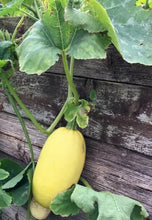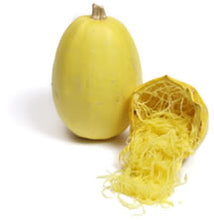25 seeds
Ready in 100 days
Planting companions: Corn, beans, radishes, garlic, ...
Squashes grew in Native American gardens alongside corn and beans; this group of plants, called the 'three sisters,' mutually benefited from each other.
Unsuitable companion: Potato, ...
This variety produces 12'' long squashes that yield delicious, low-calorie, light yellow flesh spaghetti. It can be stored for up to 6 months.
Start your squash seeds indoors four weeks before the last expected ground frost. Squashes don't like to be transplanted, so opt for a large peat pot. Sow 2 seeds per pot and select the strongest when the time comes. About a week before the last frost, start acclimating your plants to outdoor life. When the soil temperature is around 18°C (65°F), transplant them into rich, well-drained soil 8 to 10 feet apart. You can also sow your seeds directly in the garden; wait for the soil to reach a temperature of 21°C (70°F) and sow them at a depth of 1/2''.
Ensure to keep the soil consistently moist and feel free to use mulch to retain moisture and control weeds, as well as to keep your squashes clean. When watering, avoid wetting the leaves, as mold and fungi can develop. Don't hesitate to cover your plants if the temperature drops to freezing.
Squashes can be harvested as soon as the stem begins to dry, and the skin becomes too tough to pierce with a fingernail. Because cold weather can damage squashes, they should be harvested before the first frost. Cut the stem with a sharp knife, leaving a length of 2-3''. Do not carry the squash by the stem; if the stem breaks, it causes rapid deterioration of the squash, use it as soon as possible. Cure squashes in the sun or in a dry place until the stem dries; do not wash those you intend to store.




